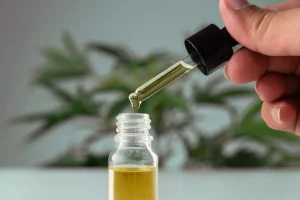
In Europe, about half (44–46%) of individuals seeking treatment for AUD have non-abstinence goals (Haug & Schaub, 2016; Heather, Adamson, Raistrick, & Slegg, 2010). In the U.S., about 25% of patients seeking treatment for AUD endorsed nonabstinence goals in the early 2010s (Dunn & Strain, 2013), while more recent clinical trials have found between 82 and 91% of those seeking treatment for AUD prefer nonabstinence goals (Falk et al., 2019; Witkiewitz et al., 2019). In addition to shaping mainstream addiction treatment, the abstinence-only 12-Step model also had an indelible effect on the field of SUD treatment research. Most scientists who studied SUD treatment believed that abstinence was the only acceptable treatment goal until at least the 1980s (Des Jarlais, 2017). Abstinence rates became the primary outcome for determining SUD treatment effectiveness (Finney, Moyer, & Swearingen, 2003; Kiluk, Fitzmaurice, Strain, & Weiss, 2019; Miller, 1994; Volkow, 2020), a standard which persisted well into the 1990s (Finney et al., 2003). Little attention was given to whether people in abstinence-focused treatments endorsed abstinence goals themselves, or whether treatment could help reduce substance use and related problems for those who did not desire (or were not ready for) abstinence.
Testing judgments about attribution-emotion-action linkages: A life-span approach

Harm reduction therapy has also been applied in group format, mirroring the approach and components of individual harm reduction psychotherapy but with added focus on building social support and receiving feedback and advice from peers (Little, 2006; Little & Franskoviak, 2010). These groups tend to include individuals who use a range of substances and who endorse a range of goals, including reducing substance use and/or substance-related harms, controlled/moderate use, and abstinence (Little, 2006). Additionally, some groups target individuals with co-occurring psychiatric disorders (Little, Hodari, Lavender, & Berg, 2008).
For Immediate Treatment Help Call 800-526-5053
Perhaps the most notable gap identified by this review is the dearth of research empirically evaluating the effectiveness of nonabstinence approaches for DUD treatment. Given low treatment engagement and high rates of health-related harms among individuals who use drugs, combined with evidence of nonabstinence goals among a substantial portion of treatment-seekers, testing nonabstinence treatment for drug use is a clear next step for the field. This could include further evaluating established intervention models (e.g., MI and RP) among individuals with DUD who https://ecosoberhouse.com/article/10-useful-sobriety-sayings-that-can-help/ have nonabstinence goals, adapting existing abstinence-focused treatments (e.g., Contingency Management) to nonabstinence applications, and testing the efficacy of newer models (e.g., harm reduction psychotherapy). Ultimately, nonabstinence treatments may overlap significantly with abstinence-focused treatment models.
III.D. Abstinence Violation Effect
In contrast, individuals with greater SUD severity, who are more likely to have abstinence goals, generally have the best outcomes when working toward abstinence (Witkiewitz, 2008). Together, this suggests a promising degree of alignment between goal selection and probability of success, and it highlights the potential utility of nonabstinence treatment as an “early intervention” approach to prevent SUD escalation. Lack of consensus around target outcomes also presents a challenge to evaluating the effectiveness of nonabstinence treatment. Experts generally recommend that SUD treatment studies report substance use as well as related consequences, and select primary outcomes based on the study sample and goals (Donovan et al., 2012; Kiluk et al., 2019).


A person may experience a particularly stressful emotional event in abstinence violation effect their lives and may turn to alcohol and/or drugs to cope with these negative emotions. An abstinence violation can also occur in individuals with low self-efficacy, since they do not feel very confident in their ability to carry out their goal of abstinence. The AVE was introduced into the substance abuse literature within the context of the “relapse process” (Marlatt & Gordon, 1985, p. 37). Relapse has been variously defined, depending on theoretical orientation, treatment goals, cultural context, and target substance (Miller, 1996; White, 2007).

